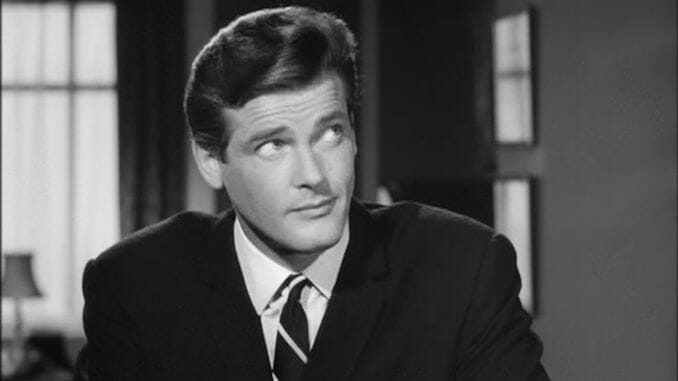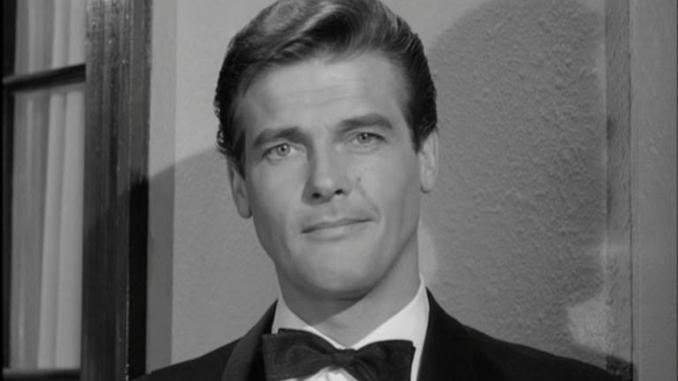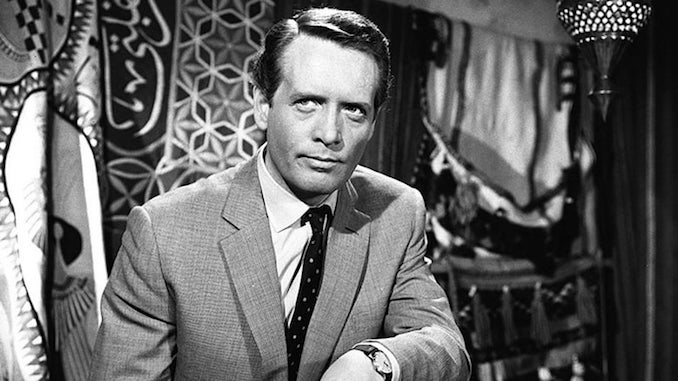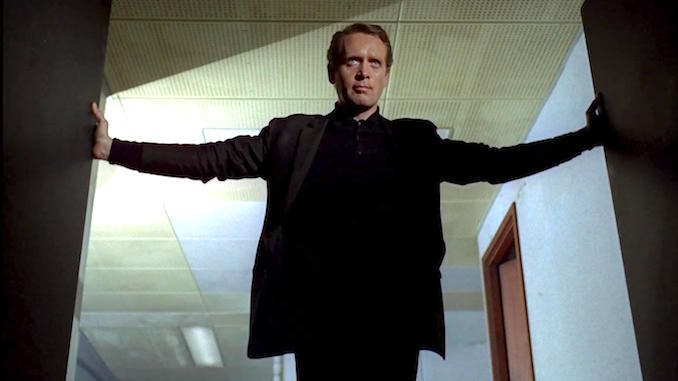3 Great Spy TV Shows of James Bond’s Golden Age to Stream Now
These hard-to-find ’60s classics are available now, just when we’re all pondering 007’s future
TV Lists streaming
Every 007 movie, even a long-delayed one, is an event even after nearly 60 years of them. The only movie character with a résumé longer than James Bond is Godzilla. And yet, it’s hard to overstate just how insanely popular the character was in the decade that spawned his film franchise: The 1960s were Bond’s era. And while television has never had an official 007 series (no, THAT ONE. doesn’t count), studios on both sides of the Atlantic were keen to cash in on spymania—and, in once case, a series even served as the trial run for one of the men who would take up the storied mantle.
American audiences will be familiar with shows like Mission: Impossible, The Man From U.N.C.L.E., or even a spoof like Get Smart, to name a few. But as Daniel Craig’s final 007 film outing, No Time To Die, hits theaters, three British shows that have previously been difficult to find are now all available to stream. For fans of the character’s history, they provide the perfect means of putting yourself in the mindset of those who were around to see the character come to life for the first time.
James Bond, the character and the phenomenon, has felt as if it’s been in a position of cultural precarity, at least since Timothy Dalton wore the tux. His audience is changing. Especially considering the ending of Craig’s latest outing, it seems inevitable that some paradigm shift has to happen. As such, there’s no better time for completionists to reach back and catch up on how television reacted to the character’s unprecedented popularity.
![]()
The Saint

I observe that there are two categories of 007 fan: Those who regard Roger Moore as the most Bondish of Bonds, and those who just cannot stand the guy. For the former, The Saint gives you plenty of hourlong episodes of Moore being a roguish cutie pie, and for the latter it may shed a little light on why they picked him to fill the tux vacated by Sean Connery. For fans of Archer, the latter-season opening titles will at the very least spark some recognition.
First airing in 1962 and carrying on through seven seasons, the show casts Moore as Simon Templar, a kind of heroic playboy with a square jaw, a sense of justice, and unlimited airline miles. Templar jets around the globe looking for trouble, often finding himself coming to the aid of damsels in distress, solving mysteries, preventing foul murders, and occasionally kicking an escaped Nazi war criminal down a mine shaft.
The show’s earlier black and white episodes always began with Moore setting up the story’s players of the week in a fourth-wall-breaking monologue that was invariably too cute by half, though the show’s later seasons instead employ tasteful voiceover. The little sting right at the end of every cold open crowns Moore with a superimposed halo: The totally innocent grin is all the actor’s own, though. It is inexplicably, infectiously fun, and you see some vestiges of it in his turns as 007.
You can watch The Saint on Peacock, Tubi, Crackle and Amazon Prime Video.
Danger Man / Secret Agent

One of the shows most tightly tied to the Bond phenomenon actually began airing before 007 had hit theaters. Premiering in 1960, Danger Man initially failed to pick up a second season, but then—following the explosive success of the first Bond films—was resurrected in 1964. Americans know it as Secret Agent thanks to a rebranding for the States, and Johnny Rivers’ jangly, absolutely Bond-plagiarizing title theme “Secret Agent Man.”
Star Patrick McGoohan, born in Queens and raised in Ireland, was originally cast as the Irish-American John Drake, though in later seasons he was retconned to simply be another British secret agent. Particularly after the advent of the Bond films, Drake is coded as the Bond-type secret agent character, using deception, seduction, and the occasional spot of help from his support team to undertake a variety of espionage missions. If you (rightly) criticize the Bond movies for not particularly caring about actual spycraft, Danger Man has you covered: Drake infiltrates foreign government buildings to pilfer sensitive documents, busts up murder-for-hire rings, and leaks juuuust enough fake intel to trick a chemical weapons dealer out of hiding, to name a few decent episodes.
As Bondsploitation, it is a serviceable show, but has the occasional odd feeling about it. Patrick McGoohan has a cold, snide way about him in Danger Man that seems a bit off for the kind of stories on offer. He exudes a kind of prickliness that feels a bit more like the literary James Bond and miles away from any of his cinematic incarnations. I’m not aware of whether or not they ever considered him for the role of 007, but I do know he would’ve worn it poorly because of what he undertook next, which was one of the most singular feats of television storytelling, and a challenge to Bond’s entire premise…
Danger Man (AKA Secret Agent) is available on Tubi, Vudu, and Amazon Prime Video.
The Prisoner

You know my number, you can take my name, but you’ll never have my heart. — “Skyfall” by Adele
The late-model Bond movies come with existential conflict over the nature of 007’s role as a standard feature, but it’s worth remembering that plenty of people have been making pretty pointed critiques of him since the very beginning. John Le Carré, the anti-Fleming of spy novelists if there is such a thing, had some pretty harsh words for 007, saying in an interview that “he’s more some kind of international gangster with, as it is said, a license to kill.” The reason I believe most of his villains have come to resemble him so closely—GoldenEye’s ex-00 Trevelyan, the hulking and unfeeling Malik in The World Is Not Enough, the “odious Gustav Graves” who tells Bond in no uncertain terms that he’s modeled himself on Bond in Die Another Day, Silva the vengeful former protégé of M in Skyfall—is that people don’t like something about Bond.
I believe it may be that even his creators don’t like what he represents, even if they can’t resist the guy’s smile and his little finger, as Vesper Lynd would say. Airing while Bond fever was at its height in 1967, The Prisoner begins at that starting point and dives deeply into the dread of the establishment that gives rise to a Bond or a John Drake, where Sir Patrick McGoohan traded on his success in Danger Man to create one of television’s most peculiar and trippy limited series. It’s a show that scoops up the grammar of spy movies and episodic mission-of-the-week shows like Danger Man or Mission: Impossible and turns the conventions completely on their heads.
The show’s opening is framed in a way that suggests McGoohan’s unnamed protagonist may have been trapped in a cycle of paranoia and oppression for years and years. Each episode, McGoohan comes racing toward the camera in the world’s most badass car, parking at some official-looking building in London, and then stomping into the office of his superior to deliver his handwritten resignation. Shady characters who look exactly as if they are on Blofeld’s payroll gas him in his flat, and when he awakens, he finds himself in a strange seaside town referred to only as “The Village,” surrounded by smiling people who, he soon learns, also decided they were through living a life of espionage yet whose secrets are far too valuable ever to let them leave. We are never told who runs the place. Nobody has a name, just a number assigned to them by the sinister cabal in charge, whose spies lurk among the villagers and inform on McGoohan’s every action. All of it is glossed over with a veneer of friendliness and civility that sets your teeth on edge.
They want to know why McGoohan has resigned, and he won’t tell them. Really, he won’t do a single thing they ask: McGoohan’s character won’t even acknowledge that they have designated him “Number Six.” “I am not a number!” he rages, “I am a free man!”
“We want information, information, INFORMATION…” the baddies intone at the start of each episode, where we are introduced to “the new Number Two,” who is almost always a villain-of-the-week who never shows up again. Watching the show again, it’s clear to me that information isn’t really what they’re after: They want control. They want him to break, to collapse into a wreck and then, when he gets up again, to smile and accept his incarceration, to be pliable and obedient inside his gilded cage.
Each episode functions as a self-contained story, always rooted in weighty subtext: McGoohan is involuntarily forced to run for office to become the new Number Two, revealing the Village’s democracy to be a stage-managed façade that everybody recognizes as such. McGoohan goes up against the new Number Two’s patented education system, which beams rote brainwashing into the minds of its “students.” He dedicates himself to taking revenge on behalf of an elderly Village denizen callously slain by their jailers, and succeeds by weaponizing the same surveillance state snitch culture paranoia against the new Number Two. There’s even a Wild West episode.
Through it all, the show employs strange psychedelic imagery, tricky special effects, and a murderous weather balloon named “Rover” to tell its mind-bending tales of deception, paranoia, and manipulation. The entire thing has the candy-colored palette of the ’60s mod scene, yet is telling stories of an individual up against a nightmarish dystopia.
McGoohan is single-mindedly focused on escape, and so the show is more often than not a tragic one (until the end, when it becomes somehow even stranger). He nonetheless never gives up, and it makes the villains so angry. The only thing he ever needs to do to get under their skin is tell them “No.”
The Prisoner is available on Tubi, and Amazon Prime Video.
Kenneth Lowe is giving you a number and taking away your name. You can follow him on Twitter and read more at his blog.
For all the latest TV news, reviews, lists and features, follow @Paste_TV.